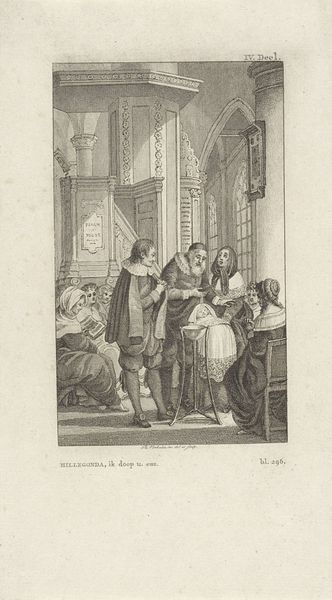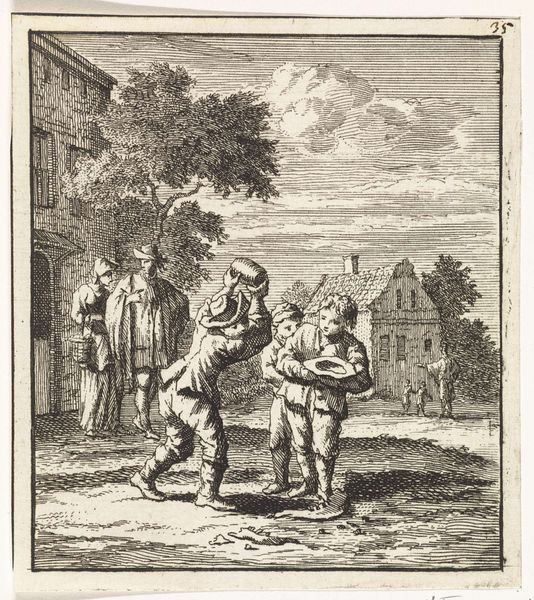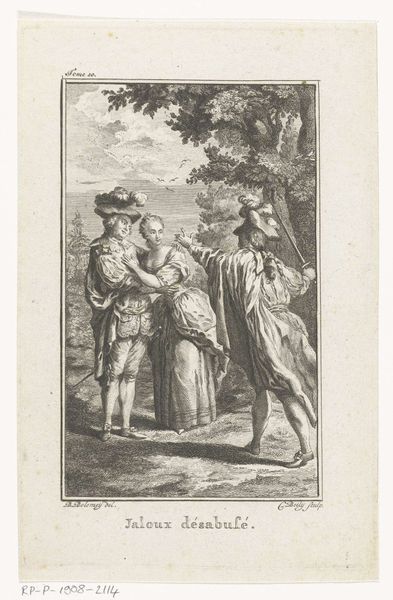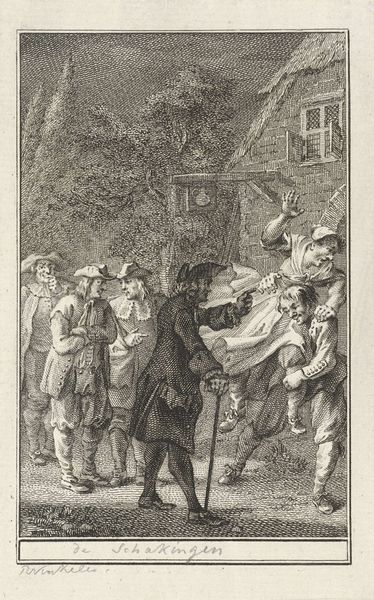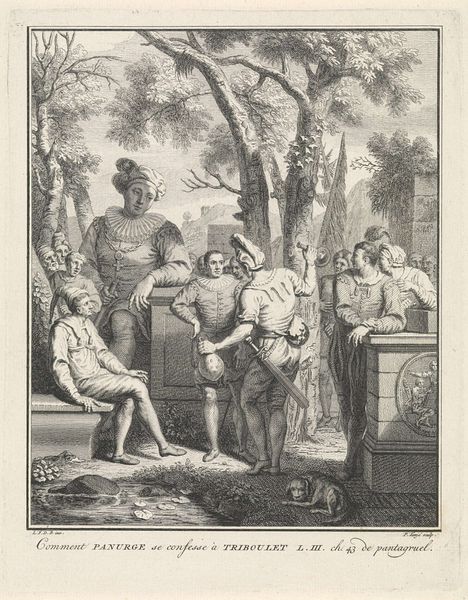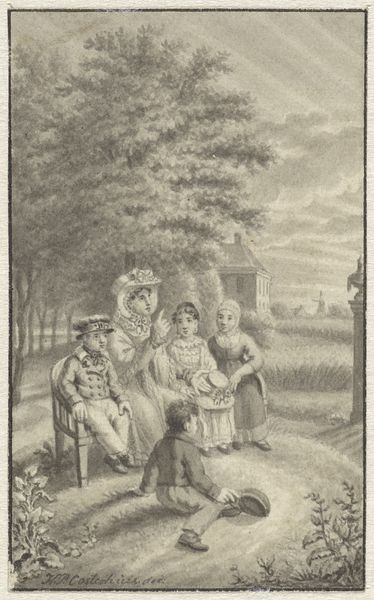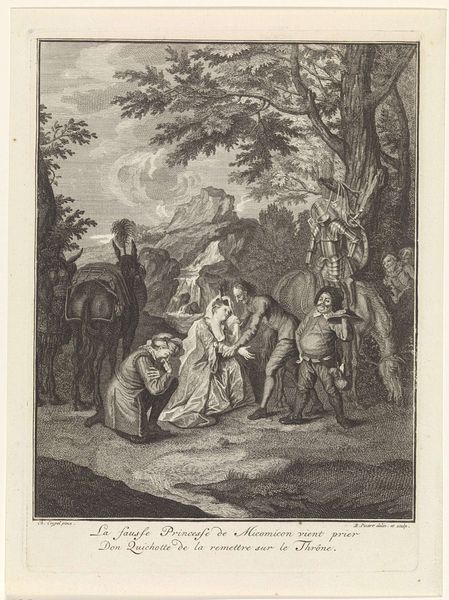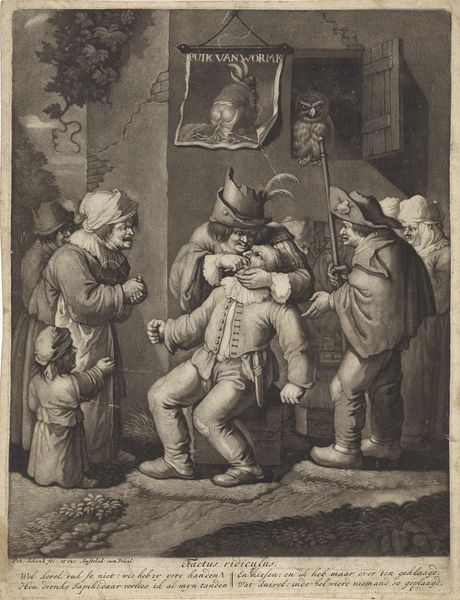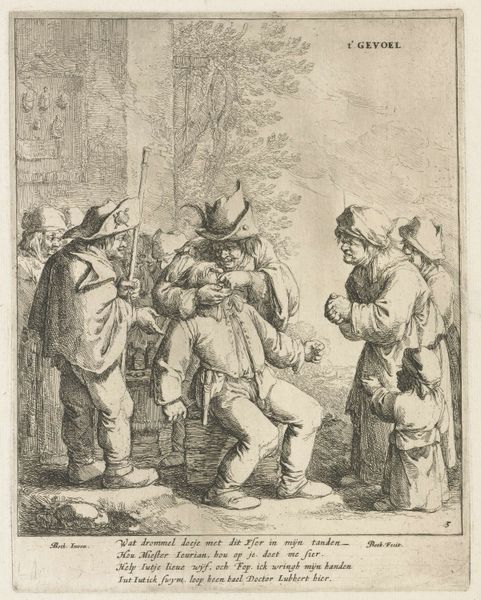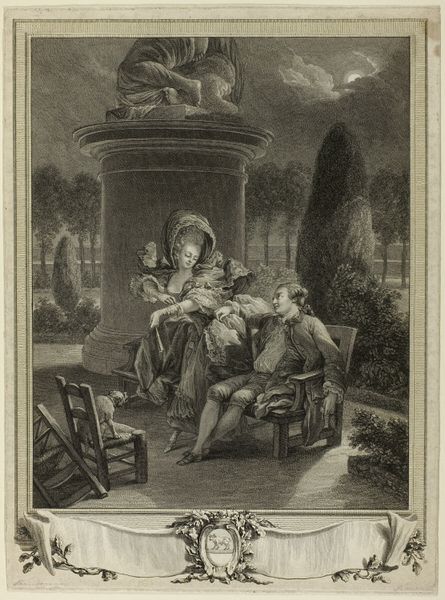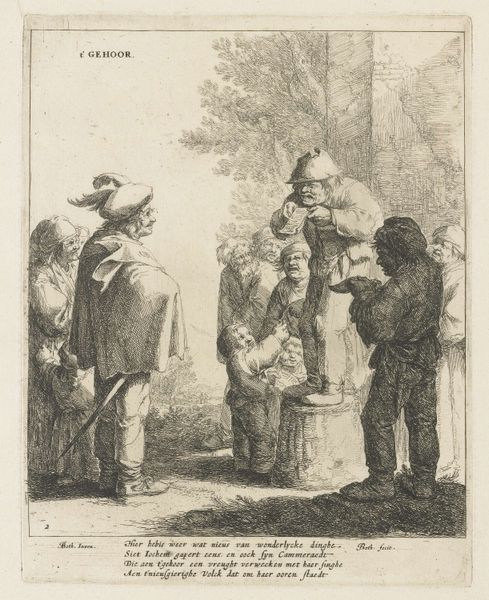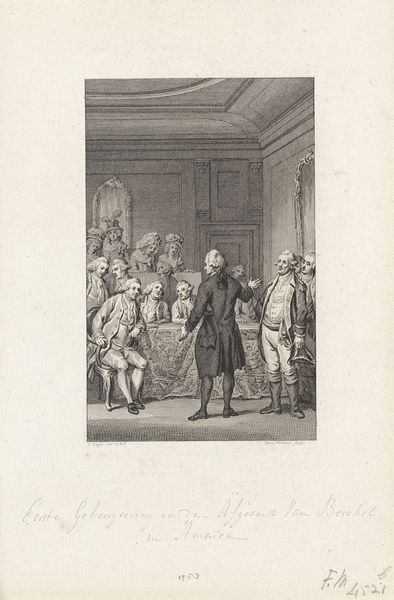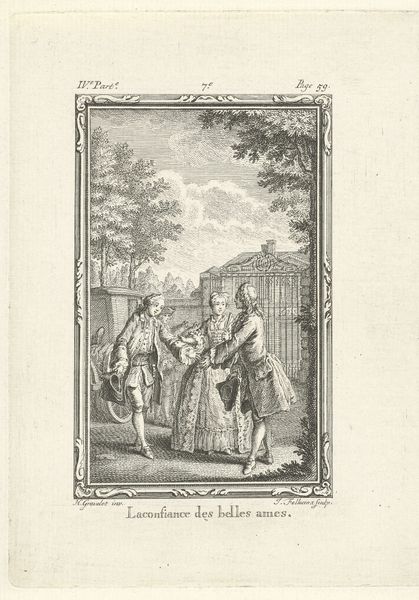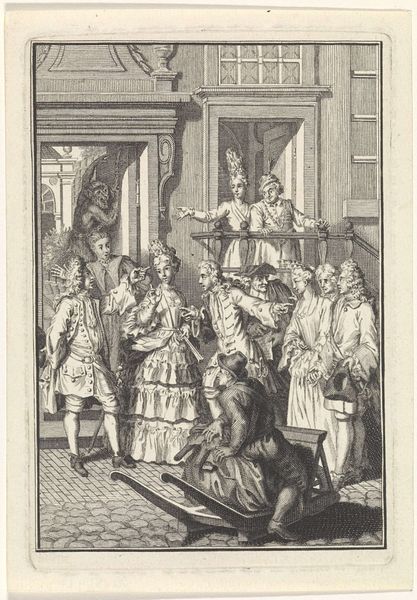
Dimensions: height 114 mm, width 75 mm
Copyright: Rijks Museum: Open Domain
Curator: Philippus Velijn created this piece, “Drinkend gezelschap bij een boom” – Drinking party by a tree – around 1834. It’s an engraving. What are your immediate thoughts? Editor: My initial impression is one of contained revelry, a controlled mirth. It feels like there’s a story just on the edge of being told, a tension between outward composure and perhaps a slight underlying chaos. Curator: The attire certainly speaks to that composed element, doesn't it? The ruffs, the somber colors… they hint at social structures and constraints, which would inevitably play a part in the depicted socializing, particularly regarding class. The fellow lounging seems perhaps a little too relaxed relative to the others. Editor: Exactly. That figure, reclined with a glass raised, appears to be at the symbolic center of the gathering. The tree, in that sense, acts as this framing device for a common bond. We see figures in various relationships surrounding this rooted symbolism. One fellow even appears to be sitting within it. What are we to assume he is reaching for within the leaves and branches? Curator: Perhaps he represents a different perspective, quite literally? While the figures on the ground are bound by social convention, he's up in the tree, a bit outside of that structure, almost mischievous. It highlights that people may participate in societal events, like a "drinking party," yet occupy vastly different positions within it. I find the composition rather thought-provoking in how the engraver seems to ask for it to be questioned, especially through this rogue symbolic device of an aloof individual in a tree. Editor: It's intriguing how the light and shadow play on their faces too, masking intentions. But the engraving style, with its detailed lines, reinforces the importance of decoding each individual's narrative within this "gezelschap." What unspoken rules of engagement were being deployed in social life during that period? What do these visual codes tell us? Curator: Well, this work definitely prompts one to consider the performance of social interactions. It really reflects the tensions of 19th century dutch culture. Each character and their carefully designed space reveal much about expectations around propriety and community at this time. Editor: Yes, it offers more questions than it answers. As a study of the ways we connect – or disconnect – even while physically close, it’s surprisingly contemporary. A small, unassuming work, yet dense with insights.
Comments
No comments
Be the first to comment and join the conversation on the ultimate creative platform.
